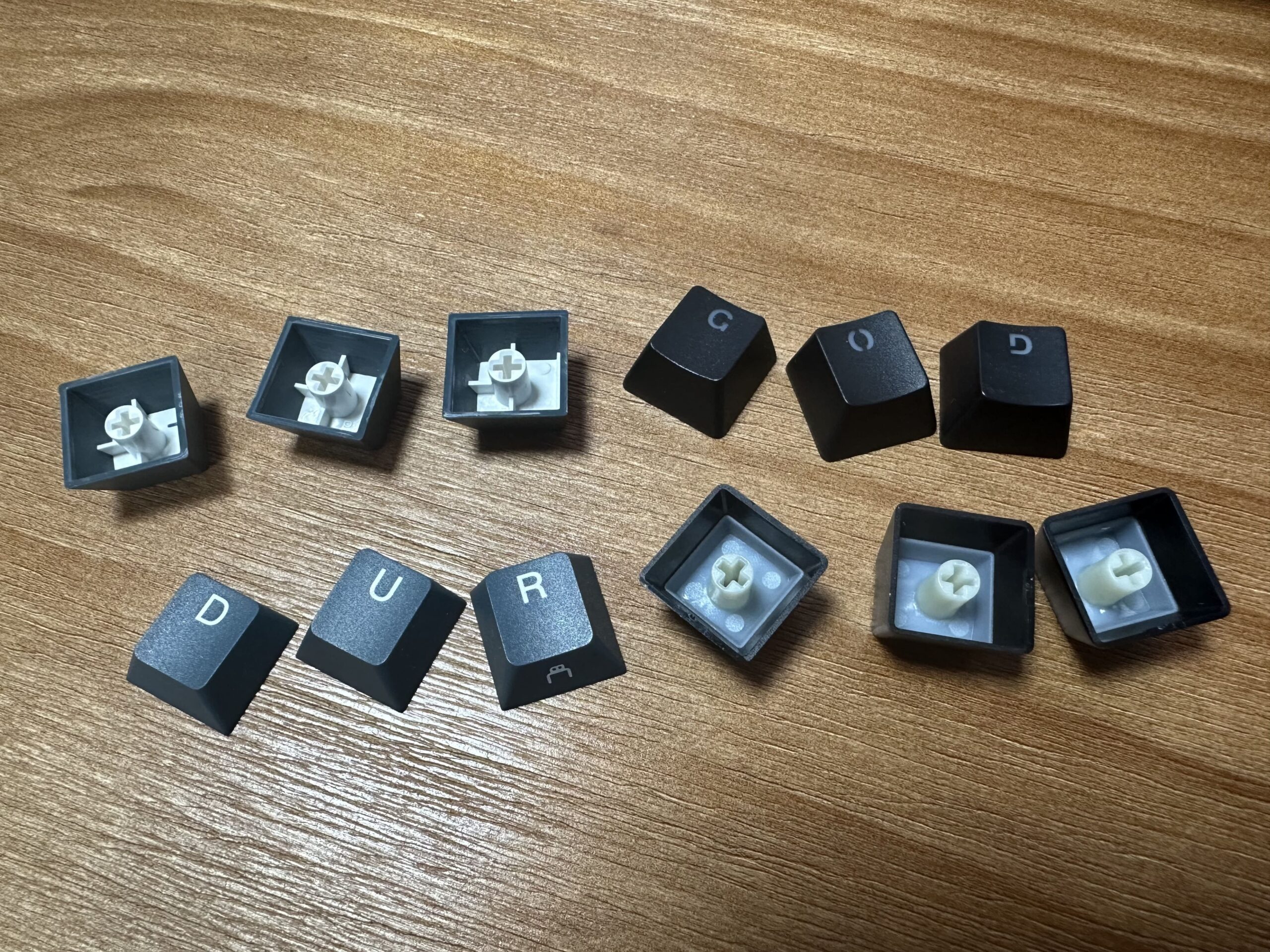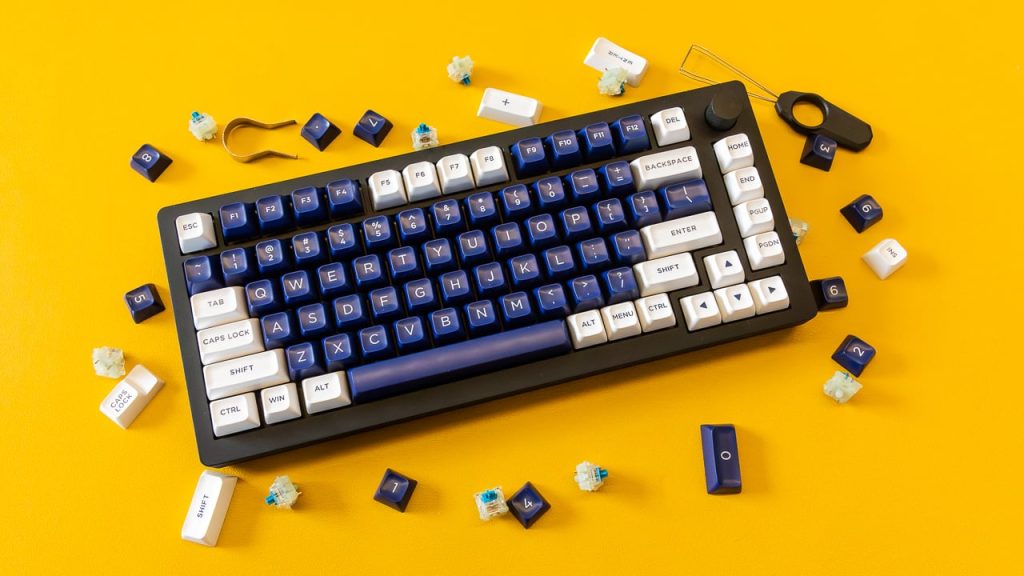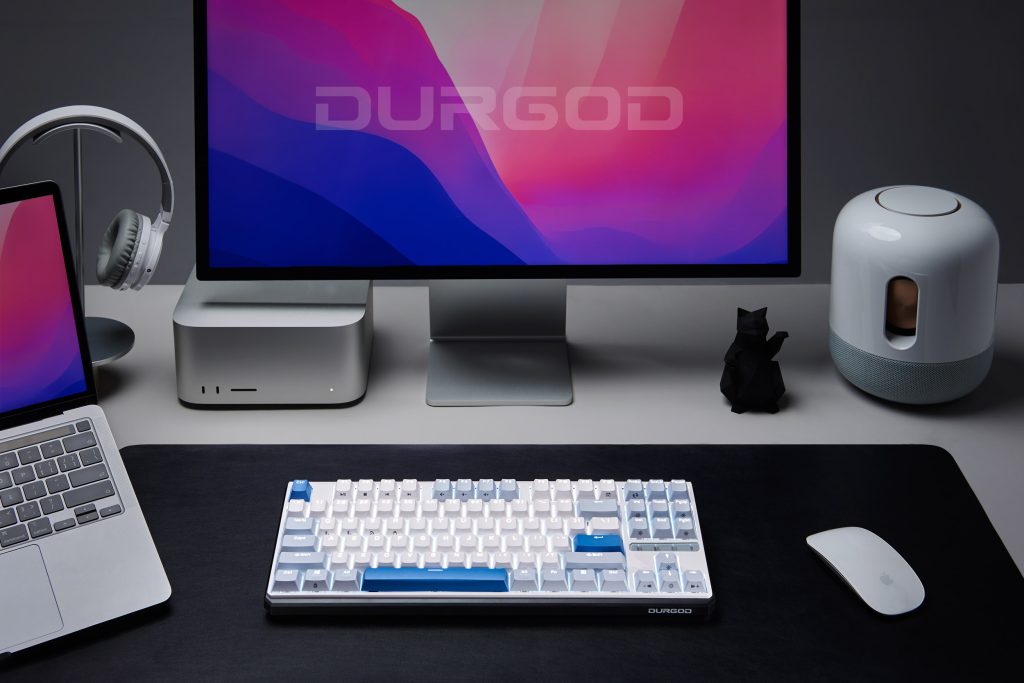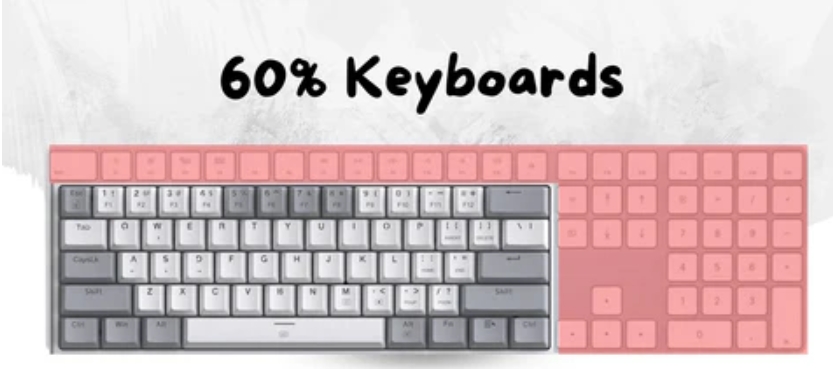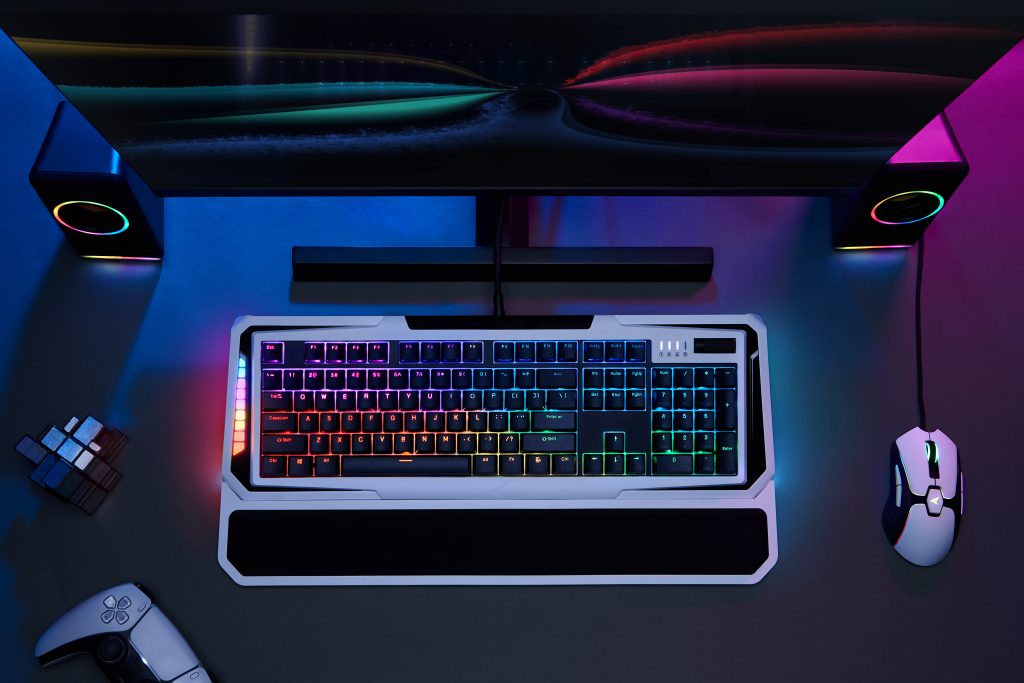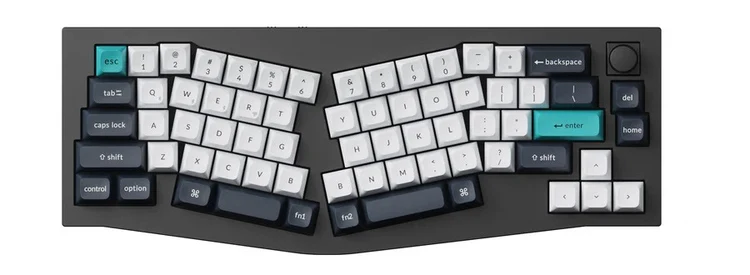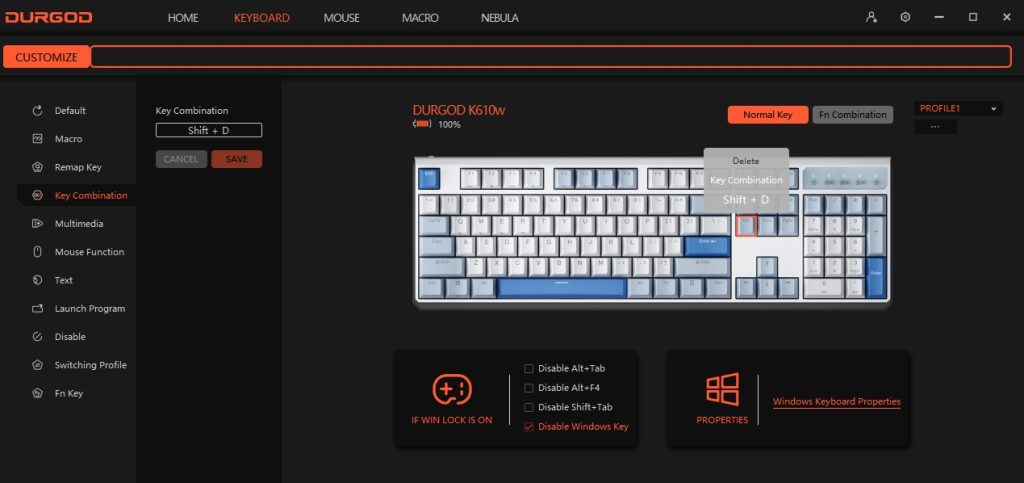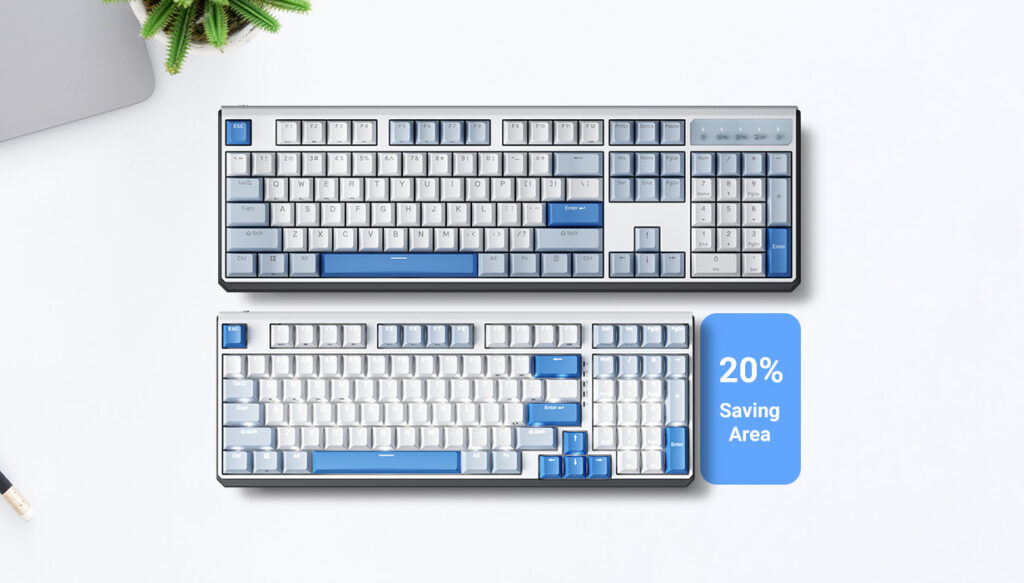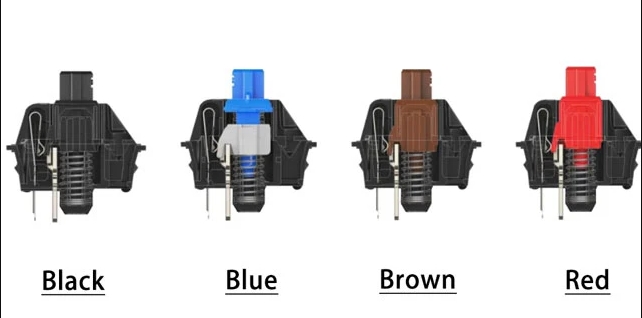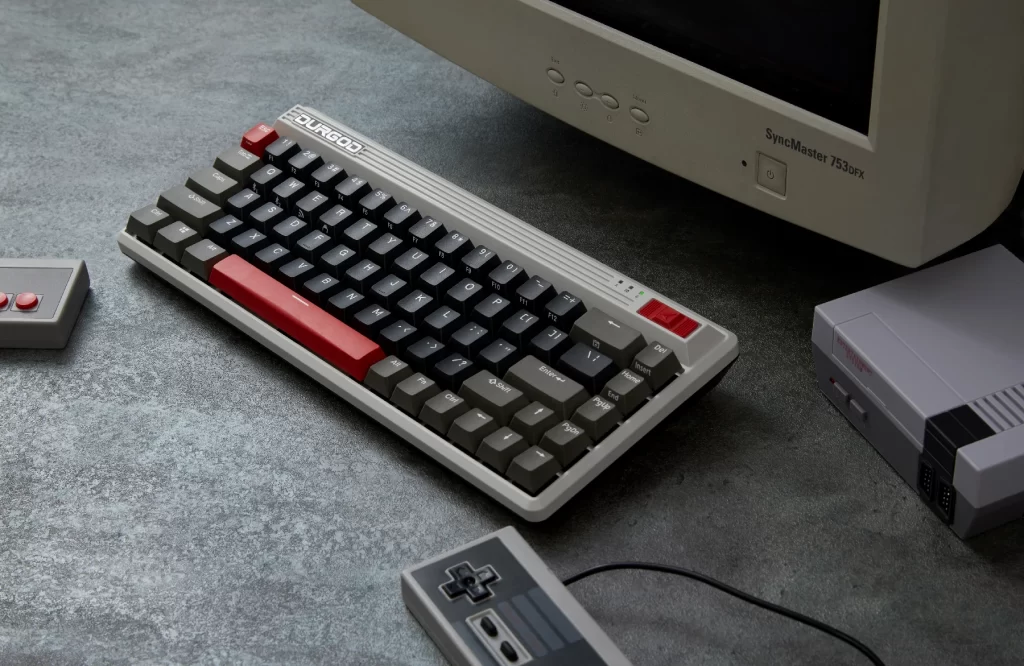Keycap Materials: A Comprehensive Guide
In the world of mechanical keyboards, keycaps play a crucial role in defining the aesthetic appeal, typing feel, and overall durability of the keyboard. As a mechanical keyboard enthusiast or a newcomer delving into this vibrant community, understanding the various keycap materials is essential. Let’s explore the most common keycap materials, their characteristics, and how they impact your typing experience.
ABS (Acrylonitrile Butadiene Styrene)
ABS is a widely used plastic in keycap manufacturing due to its cost-effectiveness and ease of production.
- Pros: Lightweight and capable of producing vibrant colors and clear legends, ABS keycaps are prevalent in many stock keyboards.
- Cons: They are prone to “shining” over time, where the surface becomes glossy from wear, and may exhibit lower durability compared to other materials.
PBT (Polybutylene Terephthalate)
PBT keycaps are favored by many enthusiasts for their durability and resistance to shine.
- Pros: They offer a textured finish that remains consistent over time, providing a more premium feel and longer lifespan. PBT keycaps are also less prone to discoloration.
- Cons: Generally, PBT keycaps are more expensive than ABS and may have fewer color options due to the material’s properties.
POM (Polyoxymethylene)
POM keycaps are less common but known for their unique feel and durability.
- Pros: They provide a smooth typing experience and are resistant to wear and shine, making them a durable choice.
- Cons: Color options for POM keycaps are limited, and they can be harder to find, making them a less popular choice among casual users.
Double-Shot Molding
While not a material, double-shot molding is a manufacturing process that involves two layers of plastic, ensuring that the legend never fades.
- Pros: Keycaps made with this process have durable legends and a high-quality feel. It’s compatible with ABS and PBT materials, combining the advantages of both.
- Cons: Double-shot keycaps are more expensive due to the complex manufacturing process.
Exotic and Rare Materials
- Wood: Wooden keycaps bring a touch of nature to your keyboard. Each piece is unique, providing a warm, organic feel.
- Pros: Unique aesthetics, warm to the touch.
- Cons: Variability in texture and potential for wear or warping over time.
- Metal and Aluminum: Offering a premium, weighted feel, metal keycaps are prized for their aesthetics and durability.
- Pros: Unmatched durability, distinct sound profile.
- Cons: Heavier touch required, can be cold to the touch, and relatively expensive.
- Other Materials: Enthusiasts have also explored keycaps made from resins, silicone, and even carbon fiber, each offering unique aesthetics and typing experiences.
Considerations for Choosing Keycap Materials
Choosing the right keycap material involves balancing aesthetics, typing feel, sound, and budget. While exotic materials like wood and metal can significantly elevate the visual appeal of your keyboard, they may also come with their own set of challenges, such as maintenance and cost. Furthermore, the choice between more traditional materials like ABS and PBT often comes down to personal preference regarding texture, sound, and resistance to wear.
Conclusion
The material of your keycaps is a critical component in customizing your mechanical keyboard, influencing everything from the tactile response to the overall aesthetic. While ABS and PBT remain staples within the community, exploring rare materials like wood, metal, or even resin can offer a unique and personalized keyboard experience. Whether you prioritize typing feel, durability, or the sheer joy of a visually striking setup, there’s a keycap material suited to every preference, ready to transform your typing journey.
For more knowledge of mechanical keyboards, visit DURGOD.



